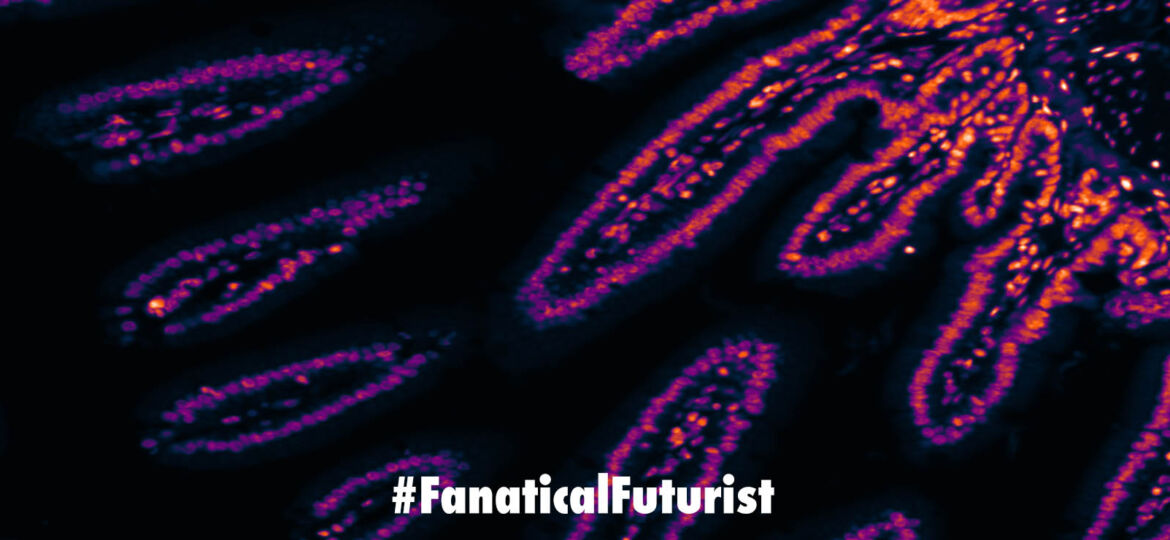
WHY THIS MATTERS IN BRIEF
There are some examples, such as internal injuries and heart attacks, where it would be great to be able to turn one kind of cell into another kind of cell on demand, now we can.
 Love the Exponential Future? Join our XPotential Community, future proof yourself with courses from XPotential University, read about exponential tech and trends, connect, watch a keynote, or browse my blog.
Love the Exponential Future? Join our XPotential Community, future proof yourself with courses from XPotential University, read about exponential tech and trends, connect, watch a keynote, or browse my blog.
We are reaching a sci-fi like point in time where we can program the human body, from our cells to our genomes, in much the same way as we program a computer – whether it’s turning human cells into dual core computers that run two parallel genetic codes, using genetic engineering to literally edit inherited genetic diseases out of the body, and many more examples.
Now though in another example of how we’re blurring the lines between technology, sci-fi, and biology as we head towards the Singularity, a silicon device that can change skin tissue into blood vessels and nerve cells has advanced from the prototype stage to the “standardised fabrication” stage, meaning it can now be made in a consistent, reproducible way.
As reported in Nature Protocols, this work, developed by researchers at the Indiana University School of Medicine, takes the device one step closer to potential use as a treatment for people with a variety of health concerns and takes us another small step closer to being able to re-grow damaged body parts like some animals do such as Salamanders and Starfish.
The technology, called tissue nanotransfection, that I’ve talked about before, is a non-invasive nanochip device that can reprogram human tissue function by applying a harmless electric spark to deliver specific genes in a fraction of a second. And, as odd as it sounds, in laboratory studies the device successfully converted skin tissue into blood vessels to repair a badly injured leg. The technology is currently being used to reprogram tissue for different kinds of therapies, such as repairing brain damage caused by stroke or preventing and reversing nerve damage caused by diabetes.
“This report on how to exactly produce these tissue nanotransfection chips will enable other researchers to participate in this new development in regenerative medicine,” said Chandan Sen, director of the Indiana Center for Regenerative Medicine and Engineering, associate vice president for research and Distinguished Professor at the IU School of Medicine.
Sen also leads the regenerative medicine and engineering scientific pillar of the IU Precision Health Initiative and is lead author on the new publication.
“This small silicon chip enables nanotechnology that can change the function of living body parts,” he said. “For example, if someone’s blood vessels were damaged because of a traffic accident and they need blood supply, we can’t rely on the pre-existing blood vessel anymore because that is crushed, but we can convert the skin tissue into blood vessels and rescue the limb at risk.”
In the Nature Protocols report, researchers published engineering details about how the chip is manufactured.
Sen said this manufacturing information will lead to further development of the chip in hopes that it will someday be used clinically in many settings around the world.
“This is about the engineering and manufacturing of the chip,” he said. “The chip’s nanofabrication process typically takes five to six days and, with the help of this report, can be achieved by anyone skilled in the art.”
Sen said he hopes to seek FDA approval for the chip within a year. Once it receives FDA approval, the device could be used for clinical research in people, including patients in hospitals, health centers and emergency rooms, as well as in other emergency situations by first responders or the military.
















